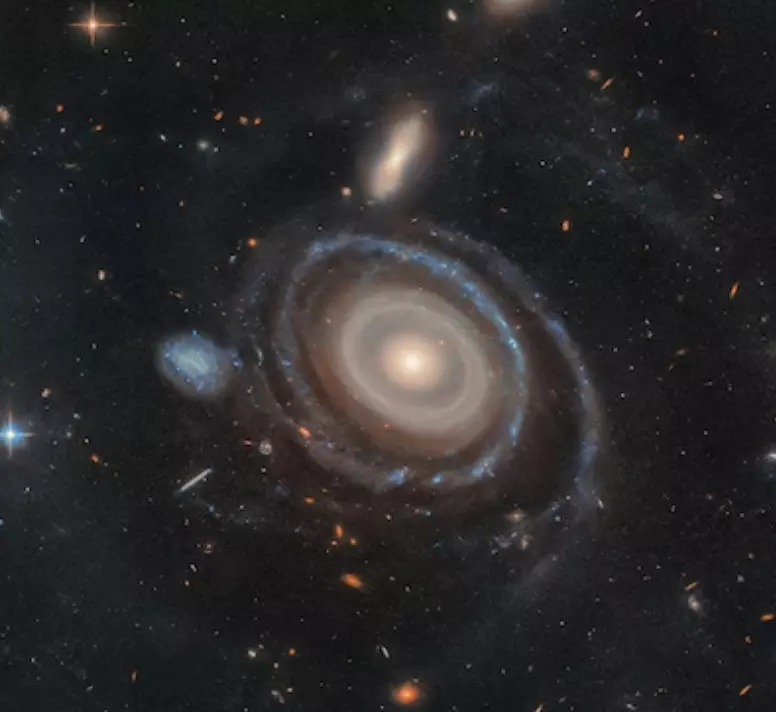Hubble Telescope uncovers enormous ‘Bullseye’ galaxy with nine mysterious rings
Hubble Telescope uncovers enormous ‘Bullseye’ galaxy with nine mysterious rings

In a groundbreaking discovery, NASA’s Hubble Space Telescope has identified a massive galaxy, LEDA 1313424, featuring an unprecedented nine star-filled rings. Astronomers believe these rings were formed when a smaller blue galaxy plunged straight through the center of LEDA 1313424, much like an arrow hitting a target.
Initially, Hubble detected eight rings—more than any previous observations of galaxies—but with the help of Hawaii’s W. M. Keck Observatory, scientists confirmed the presence of a ninth. Until now, astronomers had only observed galaxies with two or three rings at most.
A Rare Cosmic Event
The discovery was led by Imad Pasha, a doctoral student at Yale University, who described the find as pure luck.
“I was going through a ground-based imaging survey when I spotted a galaxy with multiple clear rings. It immediately caught my attention, and I had to stop to investigate,” Pasha said.
Nicknamed the “Bullseye,” LEDA 1313424 is believed to have been struck by a fast-moving blue dwarf galaxy about 50 million years ago. This impact caused waves of star formation, spreading out like ripples in a pond.
Catching the Galaxy at the Perfect Moment
Co-author Pieter G. van Dokkum noted that such a sight is extremely rare. “We’re observing the Bullseye at a very special moment. There’s only a brief period after an impact when a galaxy can display so many rings,” he explained.
On a cosmic scale, galaxies rarely pass through one another in this manner. While the Milky Way is on course for a distant collision with the Andromeda Galaxy, a direct, bullseye-style impact like this is highly unusual.
The newly discovered Bullseye galaxy is immense—about 2.5 times larger than our Milky Way, which spans 100,000 light-years in diameter. Scientists believe that as the smaller galaxy passed through, it triggered the formation of staggered rings, with the earlier ones being the most affected.
This extraordinary event gives astronomers a rare opportunity to study galactic interactions and the forces shaping the universe.

